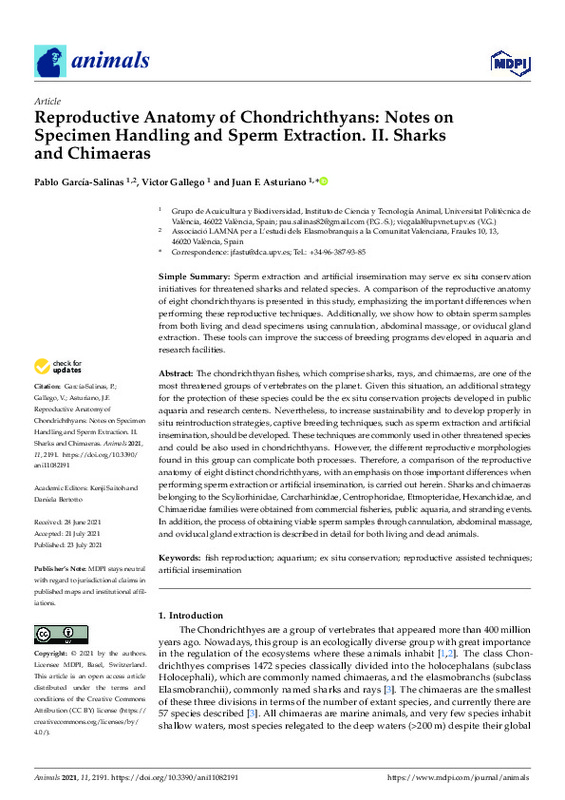JavaScript is disabled for your browser. Some features of this site may not work without it.
Buscar en RiuNet
Listar
Mi cuenta
Estadísticas
Ayuda RiuNet
Admin. UPV
Reproductive anatomy of Chondrichthyans: notes on specimen handling and sperm extraction. II. Sharks and chimaeras
Mostrar el registro completo del ítem
García-Salinas, P.; Gallego Albiach, V.; Asturiano, JF. (2021). Reproductive anatomy of Chondrichthyans: notes on specimen handling and sperm extraction. II. Sharks and chimaeras. Animals. 11(8):1-20. https://doi.org/10.3390/ani11082191
Por favor, use este identificador para citar o enlazar este ítem: http://hdl.handle.net/10251/182606
Ficheros en el ítem
Metadatos del ítem
| Título: | Reproductive anatomy of Chondrichthyans: notes on specimen handling and sperm extraction. II. Sharks and chimaeras | |
| Autor: | García-Salinas, Pablo | |
| Entidad UPV: |
|
|
| Fecha difusión: |
|
|
| Resumen: |
[EN] Sperm extraction and artificial insemination may serve ex situ conservation initiatives for threatened sharks and related species. A comparison of the reproductive anatomy of eight chondrichthyans is presented in this ...[+]
|
|
| Palabras clave: |
|
|
| Derechos de uso: | Reconocimiento (by) | |
| Fuente: |
|
|
| DOI: |
|
|
| Editorial: |
|
|
| Versión del editor: | https://doi.org/10.3390/ani11082191 | |
| Código del Proyecto: |
|
|
| Agradecimientos: |
This research was partially funded by the Fundacion Biodiversidad (PRCV00683). P.G.-S. has a PhD contract from the European Union through the Operational Program of the European Social Fund (ESF) of the Comunitat Valenciana ...[+]
|
|
| Tipo: |
|









